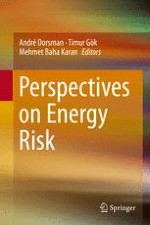2014 | OriginalPaper | Buchkapitel
12. Prospective Costs for the Aviation Sector of the Emissions Trading Scheme
verfasst von : Gerard Mooney, Cal Muckley, Don Bredin
Erschienen in: Perspectives on Energy Risk
Verlag: Springer Berlin Heidelberg
Aktivieren Sie unsere intelligente Suche, um passende Fachinhalte oder Patente zu finden.
Wählen Sie Textabschnitte aus um mit Künstlicher Intelligenz passenden Patente zu finden. powered by
Markieren Sie Textabschnitte, um KI-gestützt weitere passende Inhalte zu finden. powered by
